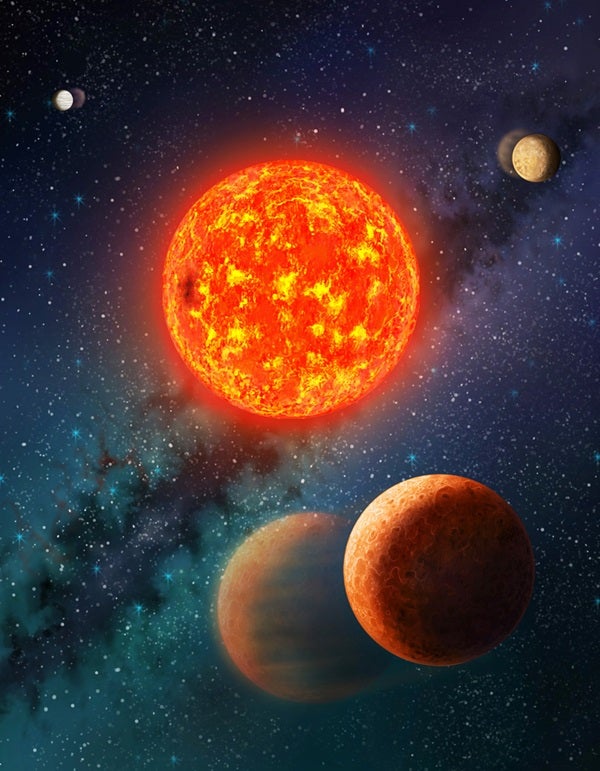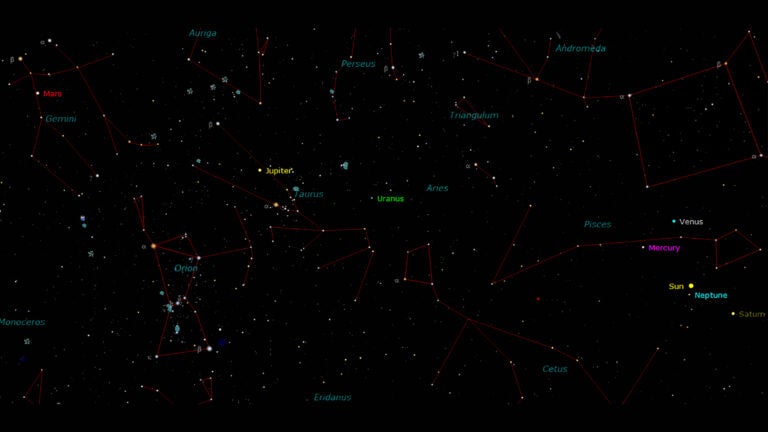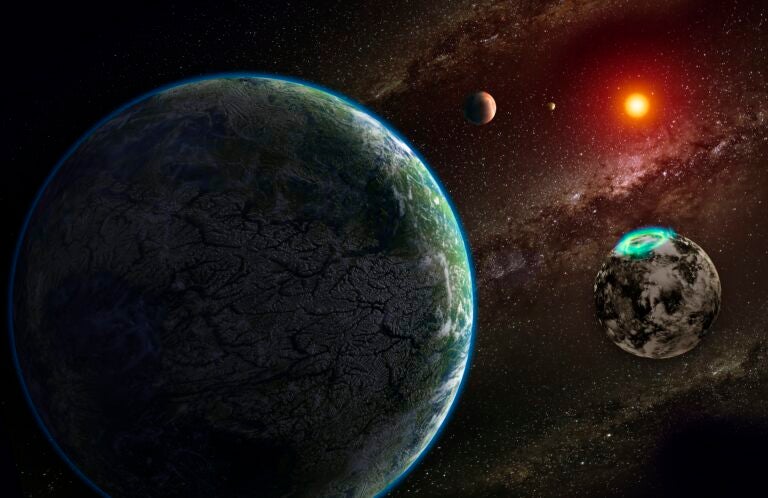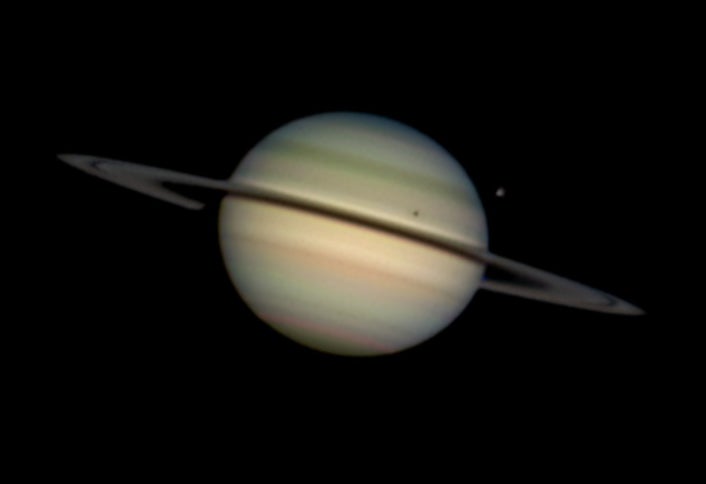Planet Kepler-138b is one of three planets that orbit the star Kepler-138 and that pass in front of it on every orbit as viewed from Earth — a maneuver that astronomers call a transit. “Each time a planet transits the star, it blocks a small fraction of the star’s light, allowing us to measure the size of the planet,” said Daniel Jontof-Hutter from Penn State.
“We also measured the gravity of all three planets, using data from NASA’s Kepler mission, by precisely observing the times of each transit,” Jontof-Hutter said. The astronomers also were able to measure the masses of these planets. “Each planet periodically slows down and accelerates ever so slightly from the gravity of its neighboring planets. This slight change in time between transits allowed us to measure the masses of the planets,” Jontof-Hutter said. After measuring both the mass and size of an exoplanet, astronomers then can calculate its density and its bulk composition.
“It is simpler to compare the mass and size of Kepler-138b to Earth’s mass and size,” Jontof-Hutter said. “Kepler-138b is less than 1/10 an Earth mass and half the size of Earth. In kilograms, Kepler-138b is 4 followed by 23 zeros — 4 times 10 to the power of 23 kilograms [5,100 billion trillion pounds]. In kilometers, its diameter is about 6,600 [4,100 miles].”
“Current measurements are consistent with a variety of compositions and favor compositions that are mostly rocky,” said Jason Rowe of the SETI Institute. All three planets orbiting Kepler-138 are close to their star and are most likely too hot to be habitable.
“These results demonstrate the rapid progress of exoplanet science and the enduring value of data collected by the Kepler mission,” said Eric Ford from Penn State. A previous study had measured the masses of the two outer planets, but this new study performed a more detailed analysis and incorporated additional Kepler data, which enabled measurement of the mass of the Mars-sized inner planet and also improved the mass measurements of the outer planets. “Kepler-138b is roughly 3,000 times less massive than the first exoplanet whose density was measured 15 years ago,” Ford said. “We now are working to discover and characterize rocky planets in the habitable zones of nearby stars.”
The Kepler spacecraft continues to search for planets and to explore the cosmos as part of a new mission, known as K2. Both K2 and NASA’s upcoming Transiting Exoplanet Survey Satellite missions will hunt for planets transiting brighter stars that will be more easily studied by ground-based observatories such as the Hobby-Eberly Telescope and the Miniature Exoplanet Radial Velocity Array. Penn State is a partner in both of these planet-hunting observatories. Penn State also is leading in the development the new Habitable Zone Planet Finder instrument, which will be installed at the Hobby-Eberly Telescope in 2016.
Information for members of the public who would like to help in the search to find undiscovered planets by searching for clues in Kepler data about changes in the brightness of a star over time is at planethunters.org. So far, Kepler data has been used to discover more than a thousand planets around other stars.










